Premium Only Content
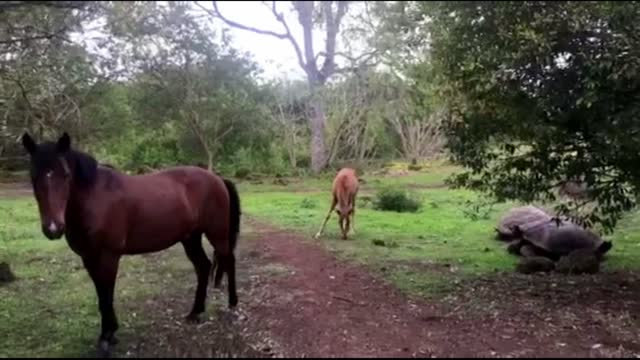
Horse and foal casually graze alongside giant Galapagos tortoises
The bizarre and freakishly large tortoises of the Galapagos Islands wander freely throughout the brush and forest on Santa Cruz Island and some of the other nearby islands. They are a strange sight, resembling massive army helmets that move slowly and deliberately in their constant quest for grass and other vegetation. They are a common enough sight that when a few of them arrived to graze in a field where a horse and her foal were also grazing, the horses were unconcerned. Happily, the horses munched away within a few feet of the ancient beasts. And the tortoises, that may be as old as 200 years, were also unconcerned with the presence of the other animals. It is an amusing sight to see such vastly different creatures feeding so casually beside each other.
The Galapagos Islands are beautiful and fascinating beyond description. Formed due to volcanic eruptions beneath the ocean floor, they are relatively new in the Earth's history. Isolated and remote, they were initially lifeless and barren. But this all changed as plants and animals found their way to the islands and made them their home.
Because the islands are so remote, the evolution of the species here has been unaffected by species from other corners of the Earth. The adaptations that were required for survival in this harsh climate have been amplified over time.
One of the best examples of this type of adaptation is the giant Galapagos tortoise. Descended from the giant tortoises of Africa, it is believed that they first found their way to the Galapagos Islands on rafts of floating vegetation. These trips would require many months and few species would survive such a journey, but the giant tortoises are able to live up to one year without food or fresh water.
Once here, the tortoises found that there was plenty of food during the wet season and a shortage during the dry season. This required them to reach higher with their long necks to find higher foliage that had not been eaten by smaller animals. Survival now depended upon vertical reach and those with larger indentations in their shells could extend their necks farther toward the food. Breeding success came for those tortoises that were better fed, stronger, larger, and the ones that lived longer. And so the cycle continued, forming the chain of events that we now know as "evolution" thanks to Charles Darwin, who was influenced greatly by the animals of the Galapagos Islands.
Charles Darwin made his historic visit to these islands aboard the HMS Beagle in the 1830s. It is very possible that these same tortoises were alive when he set foot on their home.
-
 0:48
0:48
WildCreatures
4 years ago $4.13 earnedAncient Galapagos tortoises clash in a turf war over grazing rights
3.25K1 -
 1:01
1:01
WildCreatures
4 years ago $5.19 earnedGiant Galapagos Tortoise happily munches away on grass
3.69K3 -
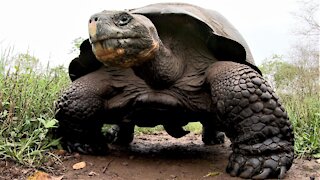 0:32
0:32
WildCreatures
4 years ago $1.96 earnedGiant Galapagos Tortoise runs over camera left on the trail
6.57K1 -
 1:07
1:07
WildCreatures
4 years ago $2.55 earnedGiant Galapagos Tortoise gulps water at his favorite drinking hole
3.57K -
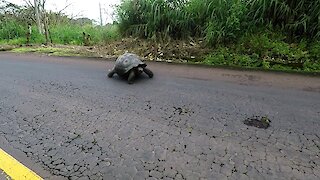 0:25
0:25
WildCreatures
4 years ago $3.66 earnedGiant wild tortoise gets right of way over traffic in the Galapagos Islands
2.92K4 -
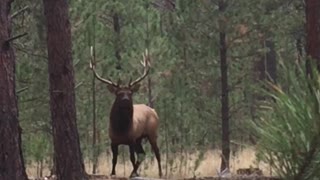 2:55
2:55
ViralHog
4 years ago $0.03 earnedGentle Giant of the Woods
3591 -
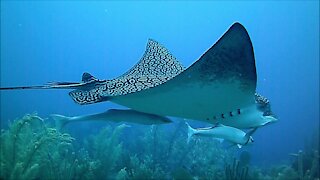 0:53
0:53
BigSexysPlayground
4 years ago $4.47 earnedGigantic stingray cruises casually past unsuspecting scuba diver
4.09K7 -
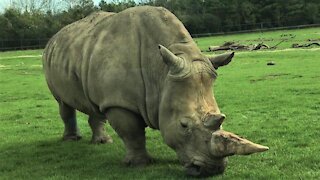 1:28
1:28
KristysWorld
4 years ago $16.43 earnedMajestic rhinoceros grazes casually beside the road on safari
4.55K4 -
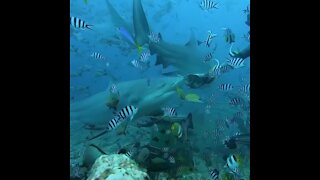 0:13
0:13
virginiashy
4 years ago $3.65 earnedScuba diver hand-feeds giant shark in Fiji
1.67K3 -
 0:53
0:53
KristysWorld
4 years ago $3.43 earnedAirport birds in Galapagos Islands feast on a french fry
3.39K